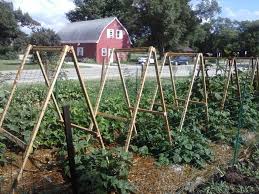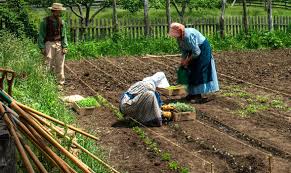The “Roots” of Organic Farming
Organic Farming is not a new thing. In fact, organic gardening is the original method of gardening. We’ve been farming this way as long as we’ve been planting and harvesting crops. Chemically-enhanced fertilizers, pesticides, and insecticides are the “new kids on the block.” We should be talking about the revitalized interest in organic gardening.
Sir Albert Howard and his wife Gabrielle Howard began to develop organic agriculture in the late 1930s and early 1940s. Sir Albert Howard is often thought to be the “father of organic farming” for his application of science to natural methods of farming.
J.I. Rodale created an organic farm in the United States in the 1940s as a way to experiment with organic growing techniques. He also founded The Rodale Institute as a means to teach organic farming to the public.
Widespread re-emergence of organic farming came about in the 1970s as a result of an increased public awareness regarding the use of pesticides and chemically-enhanced fertilizers. Concerned about personal health and the impact of chemicals and pesticides on the environment, people began to show an interest in food crops that were grown without them.
Development of Organic Farming Standards
 At first there were no standards or regulations applied to organic farming. Initial certification programs allowed each state or certifying agent to determine standards. This was beneficial in that standards could be set specific to each state’s agricultural characteristics. The negative side of this approach, however, was the unclear definition of what organic meant from one state to another. To answer this problem, congress passed the Organic Foods Production Act (OFPA) in 1990, which led to a standard of production for organic foods nationwide.
At first there were no standards or regulations applied to organic farming. Initial certification programs allowed each state or certifying agent to determine standards. This was beneficial in that standards could be set specific to each state’s agricultural characteristics. The negative side of this approach, however, was the unclear definition of what organic meant from one state to another. To answer this problem, congress passed the Organic Foods Production Act (OFPA) in 1990, which led to a standard of production for organic foods nationwide.
The OFPA tasked the USDA to define regulations to explain the law to handlers, producers, and certifiers regarding organic farming. The final regulations governing the production and sale of organic foods were set forth in 2002.
Some of the key features included in the Organic Food Production Act include stipulations that production of organic crops can only be done on land that has not been subject to prohibited substances for three years and that all crop upkeep be done using mechanical, physical, or biological means.
In the U.S. there are three categories possible for the labeling of organic foods. Products to be labeled as “100% organic” will contain only organic materials produced using organic methods. Products labeled as “organic” will contain at least 95% organic ingredients. Any product bearing the “made with organic ingredients” label must contain at least 70% organic ingredients. The USDA organic certified seal can be used on the first two categories but not on the third.
Growth in the Organic Food Industry
The demand for organically grown foods rises steadily each year, with consumers willing to pay more for the perceived health benefits eating them brings. The United States Organic Food Market Forecast and Opportunities 2018 indicates the organic food market should continue to grow at a solid rate through 2018. The study showed that at least 81% of American families purchase organic foods at least some of the time.
You can understand the importance of organic farming from here, that people also showing interest in setting up a vegetable garden in their backyard.
Increased demand in the organic food market hasn’t led to any major advancements in the planting and harvesting of organic crops, nor to a decrease in the much higher cost of eating organically grown products. The process for organic farming has remained largely unchanged since the guidelines were initially set forth. The more labor-intensive approach to organic farming is a big part of what raises the cost of organically grown product, and as long as the system remains the same, cost of the product is likely to remain unchanged as well.






